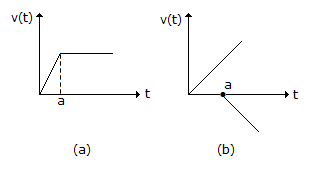Electronics and Communication Engineering - Signals and Systems
- Signals and Systems - Section 1
- Signals and Systems - Section 2
- Signals and Systems - Section 3
- Signals and Systems - Section 4
- Signals and Systems - Section 5
- Signals and Systems - Section 6
- Signals and Systems - Section 7
- Signals and Systems - Section 8
- Signals and Systems - Section 9
- Signals and Systems - Section 10
£f(t) = 
£-1F(s) = f(t)
£[a f1(t) + bf2(t)] = aF1(s) + bF2(s)



where 
£[f(t - T)] = e-sT F(s)
£[e-at f(t)] = F(s + a)
Initial value theorem 
Final value theroem 
Convolution Integral 

where t is dummy variable for t.
Assertion (A): L[af1(t) + bf2(t)] = aF1(s) - bF2(s)
Reason (R): Initial value theroem enables us to find the value of f(t) at t = 0 directly from F(s)
£[af1(t) +bf2(t)] = aF1(s) + bF2(s) Hence A is wrong.
£f(t) = 
£-1F(s) = f(t)
£[a f1(t) + bf2(t)] = aF1(s) + bF2(s)



where 
£[f(t - T)] = e-sT F(s)
£[e-at f(t)] = F(s + a)
Initial value theorem 
Final value theroem 
Convolution Integral 

where t is dummy variable for t.
Assertion (A): The modified ramp function of the given figure can be represented s sum of two ramp functions of the given figure 
Reason (R): If f(t) = t, F(s) = 1
If f(t) = t,  Hence R is wrong.
Hence R is wrong.






